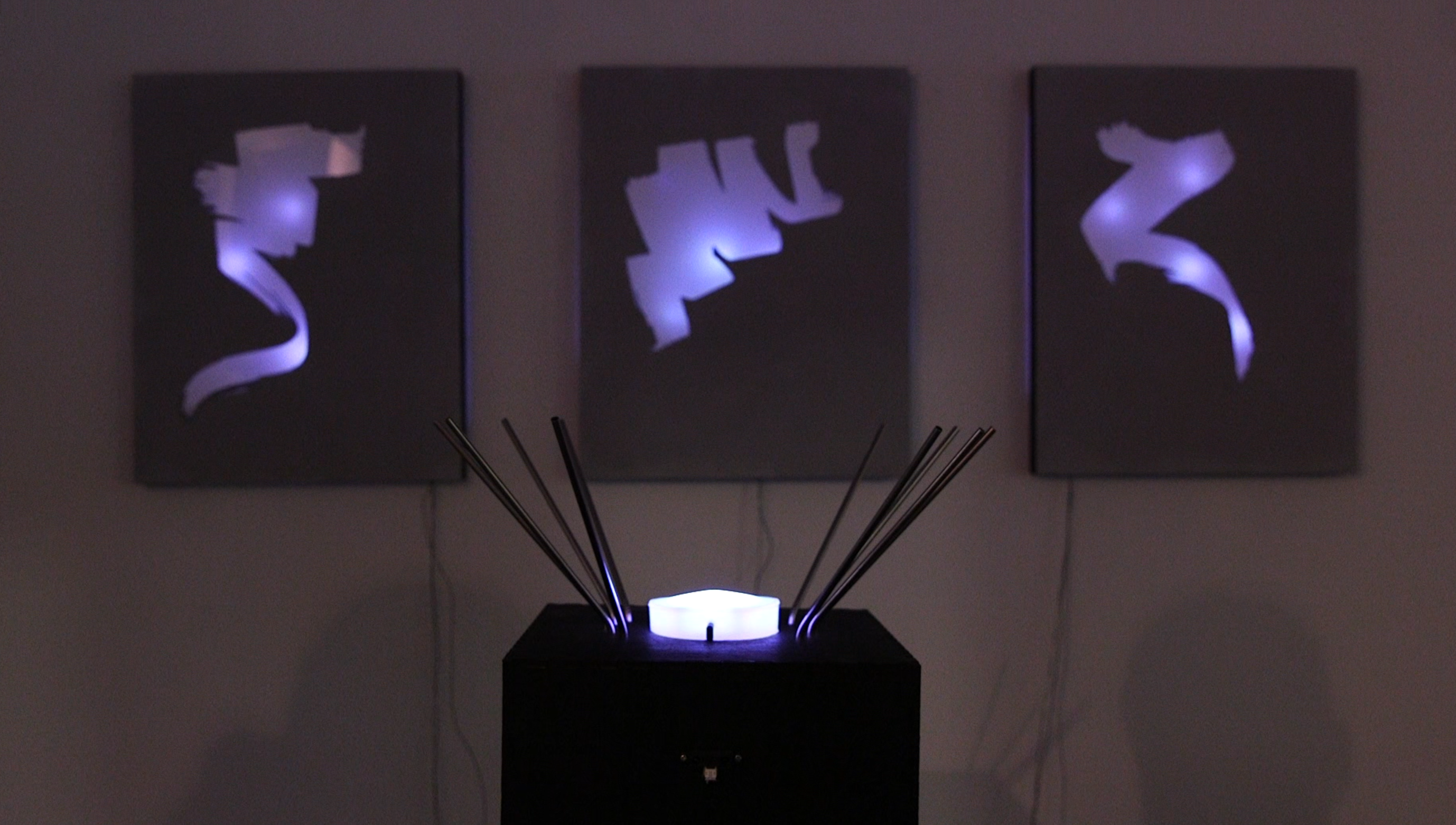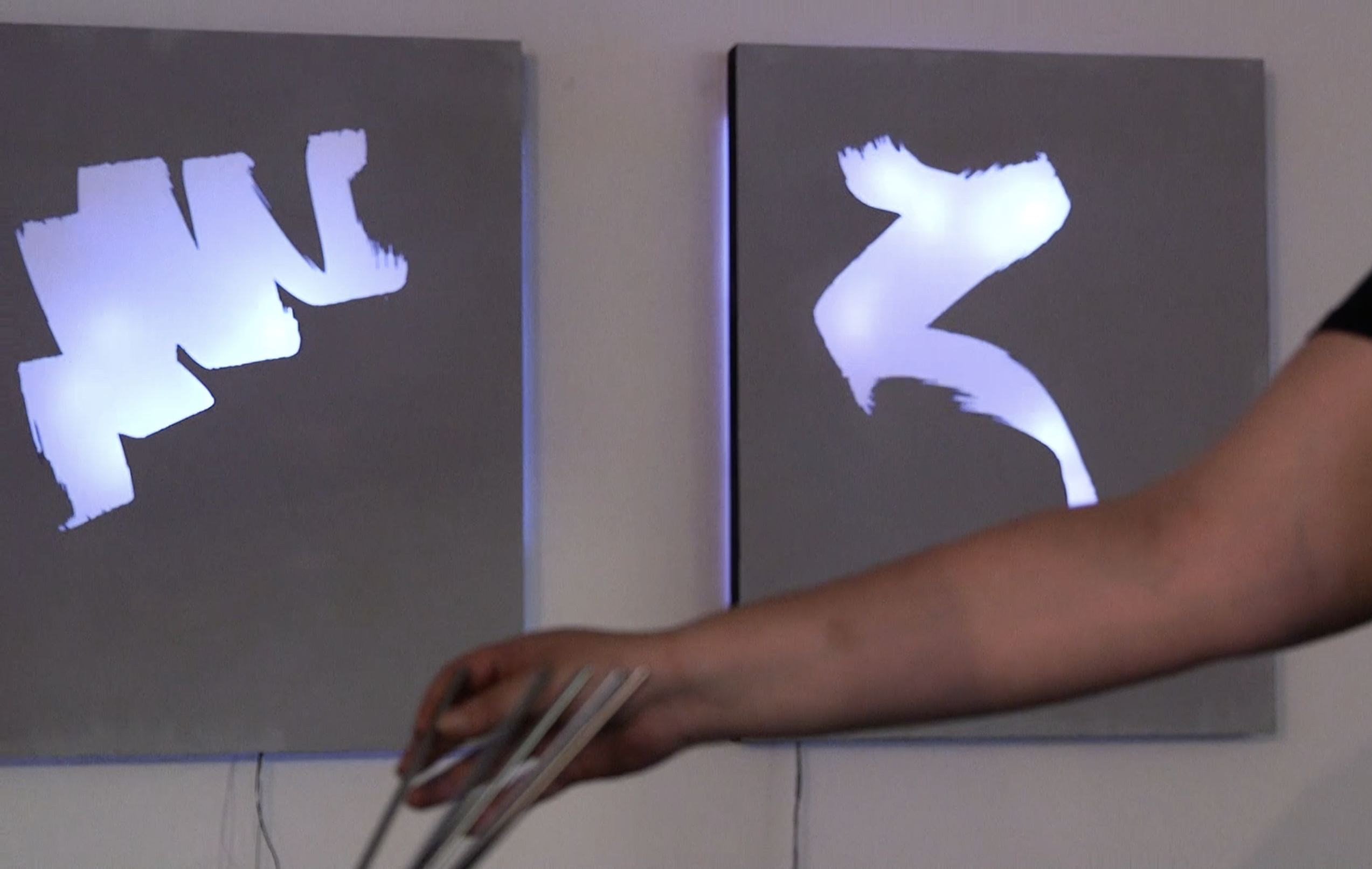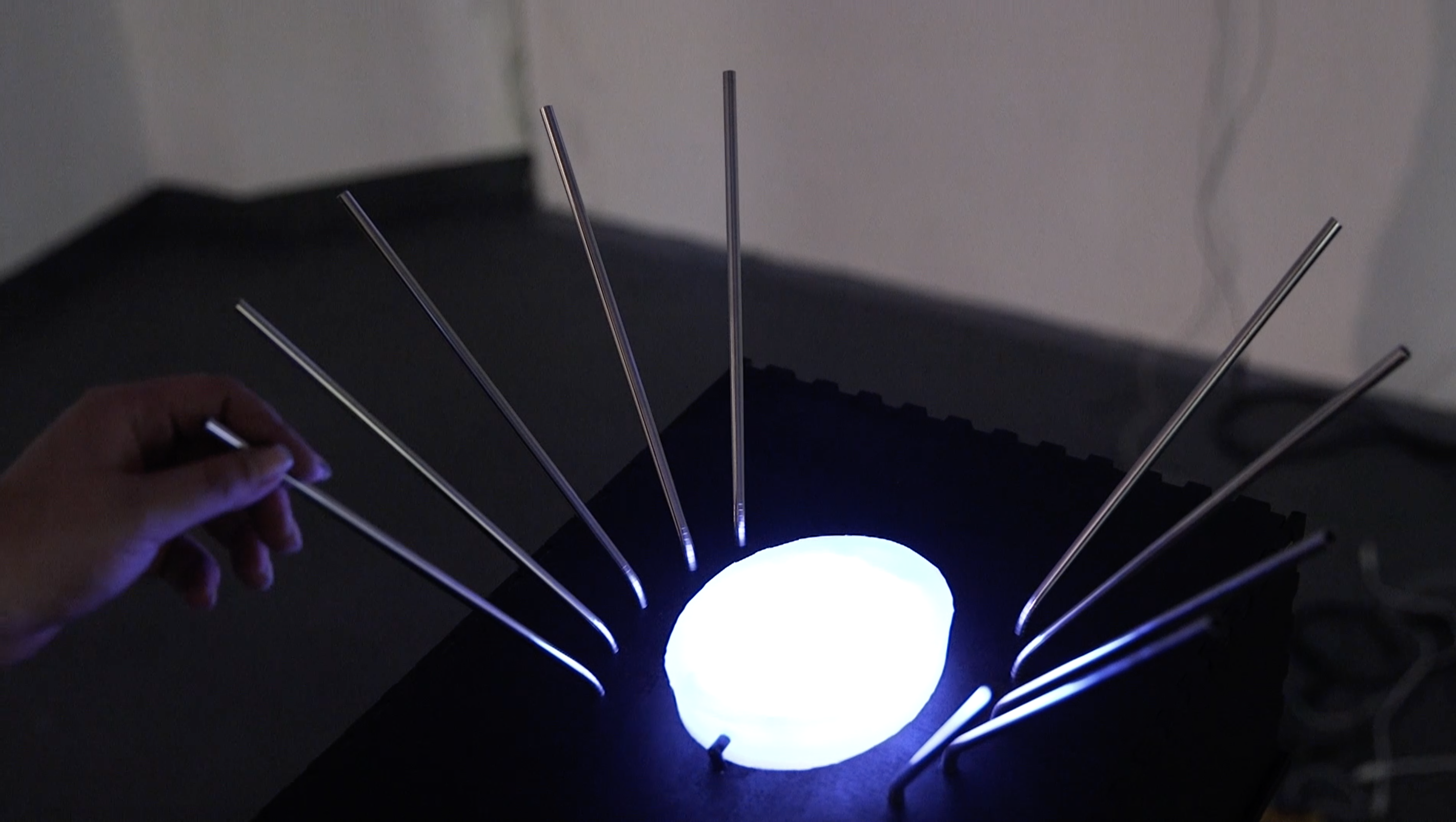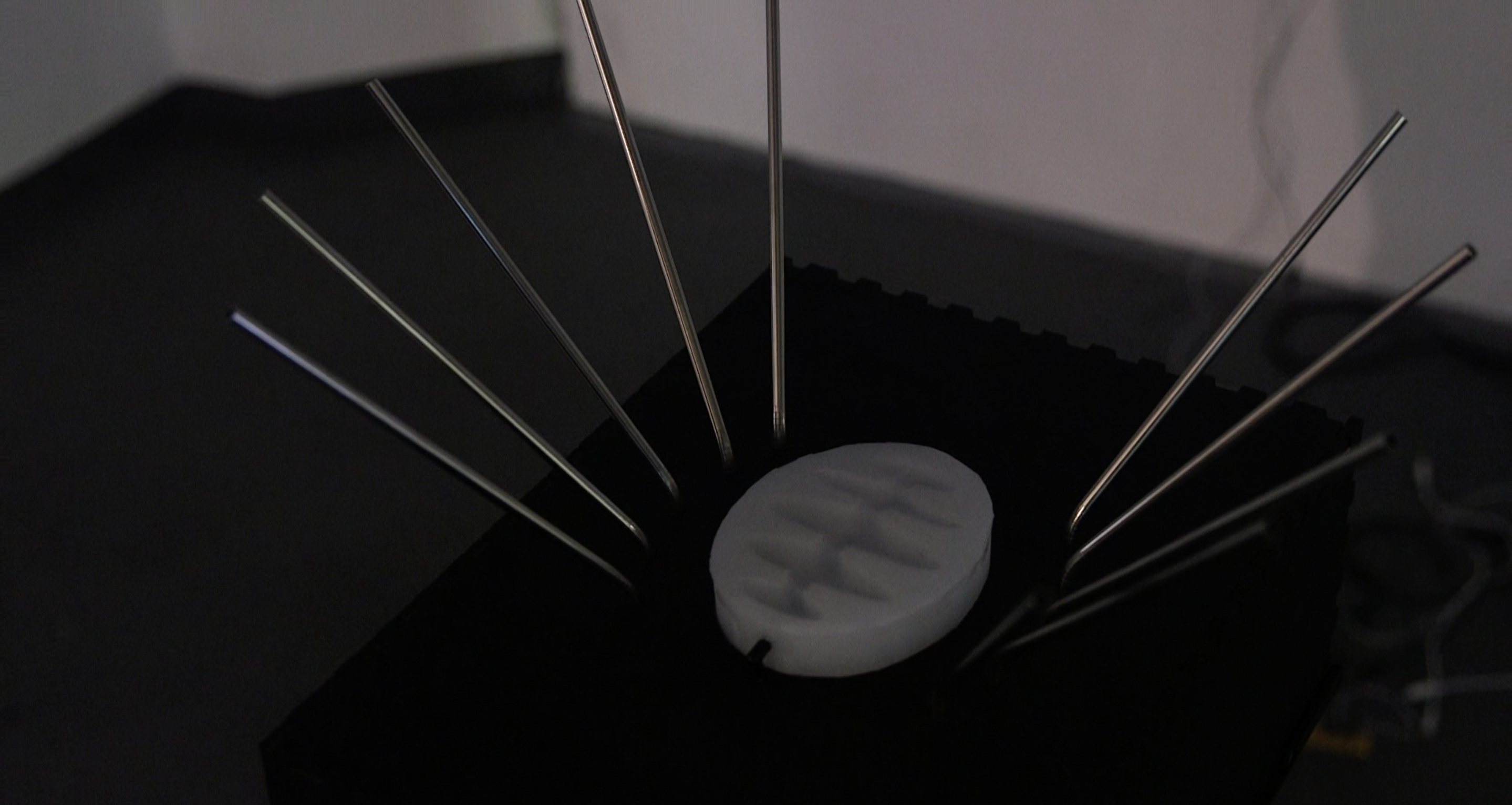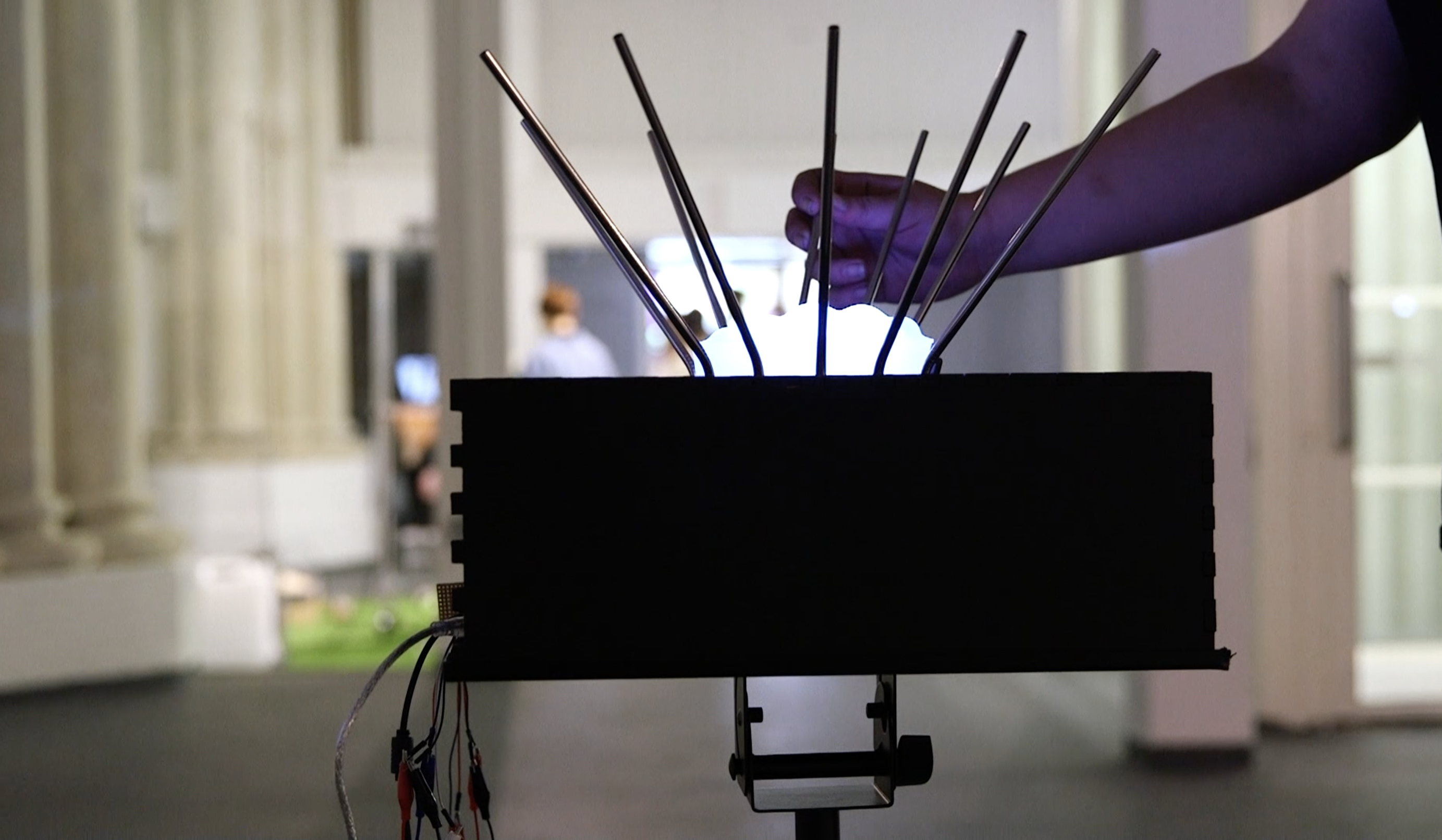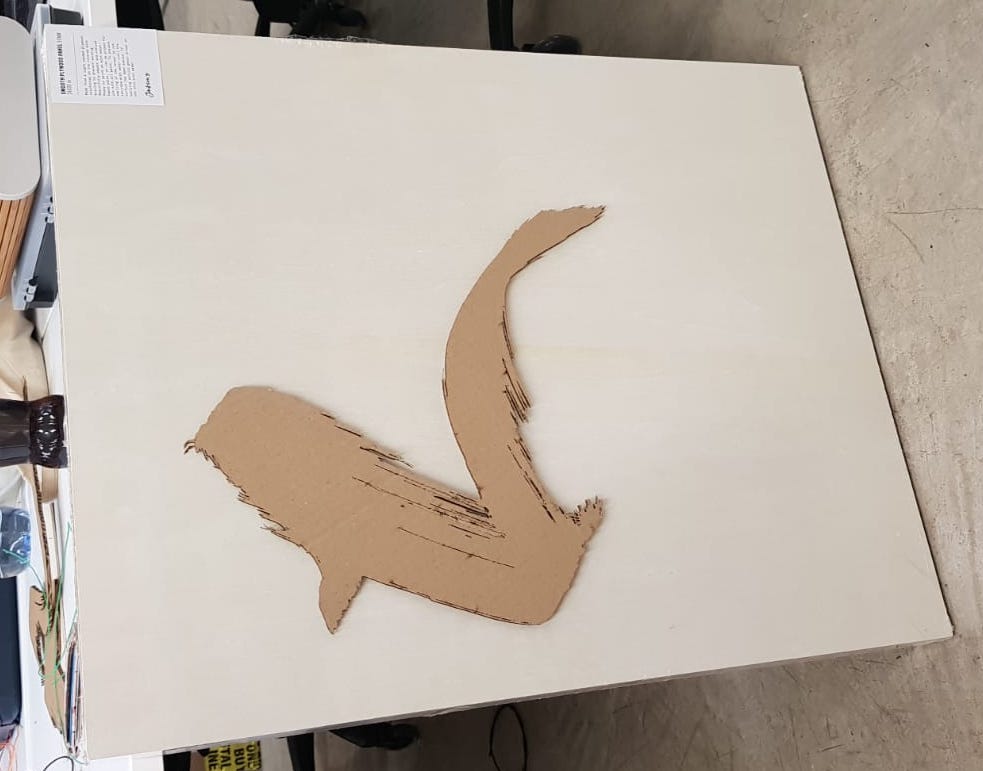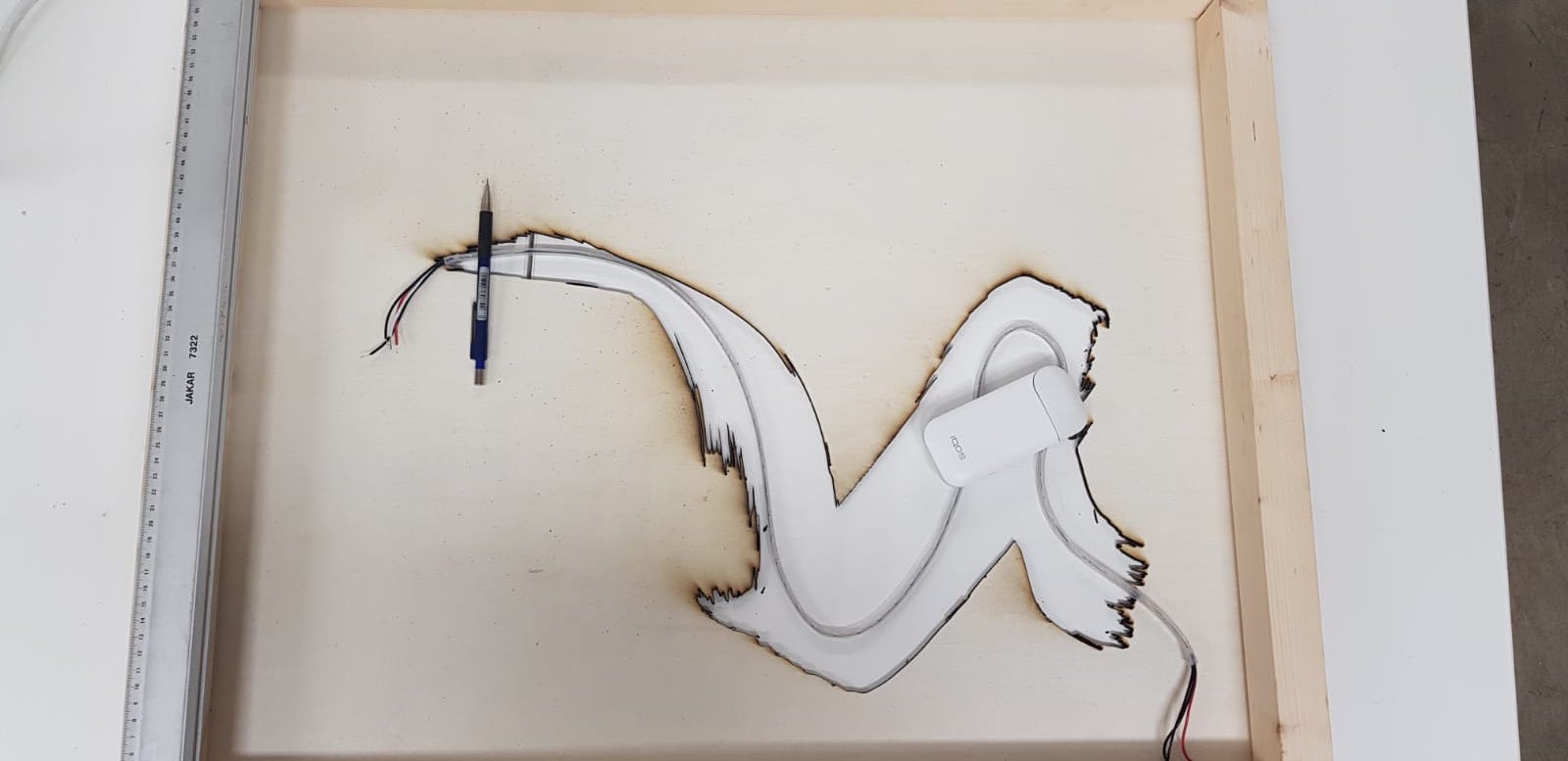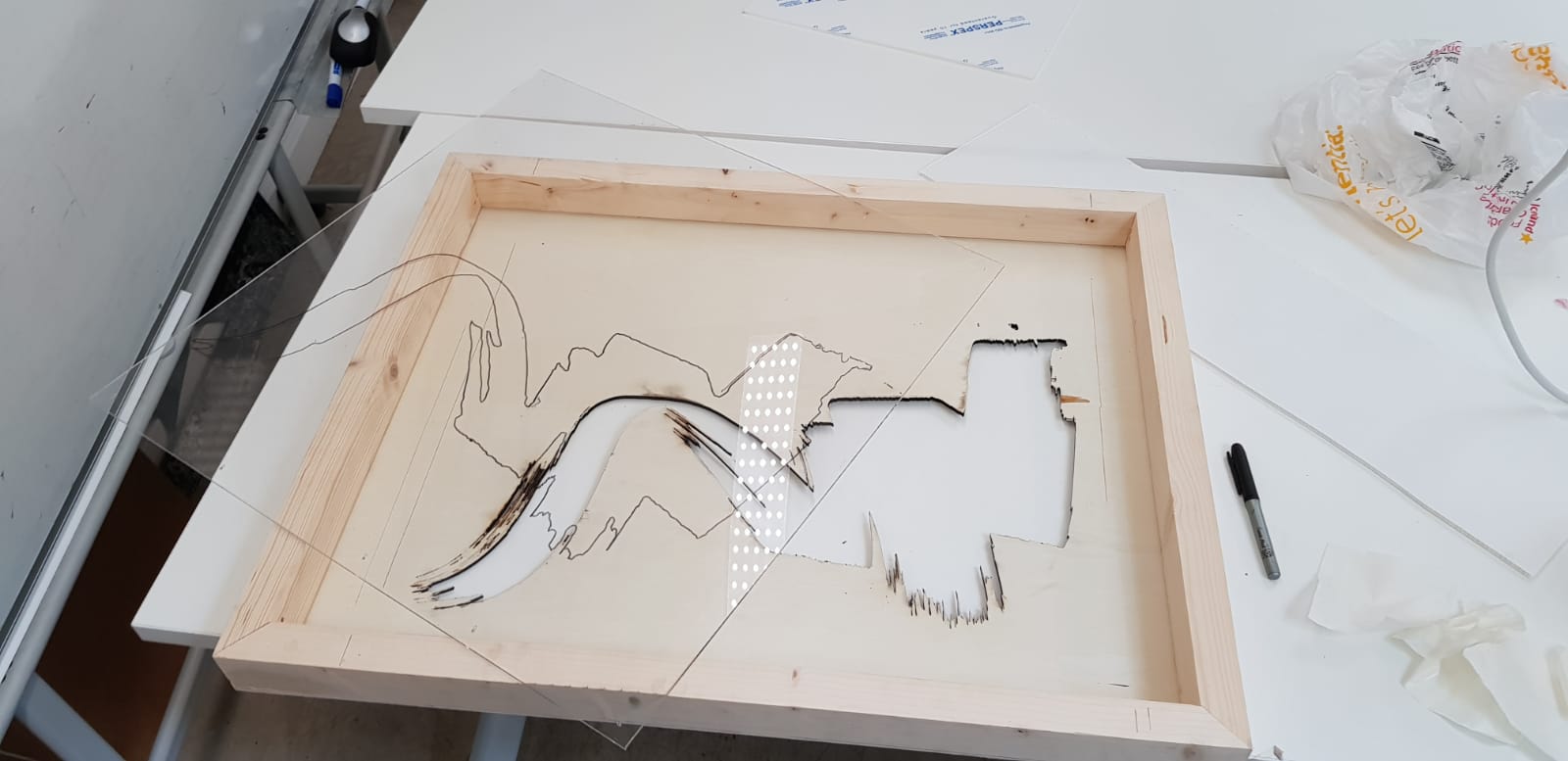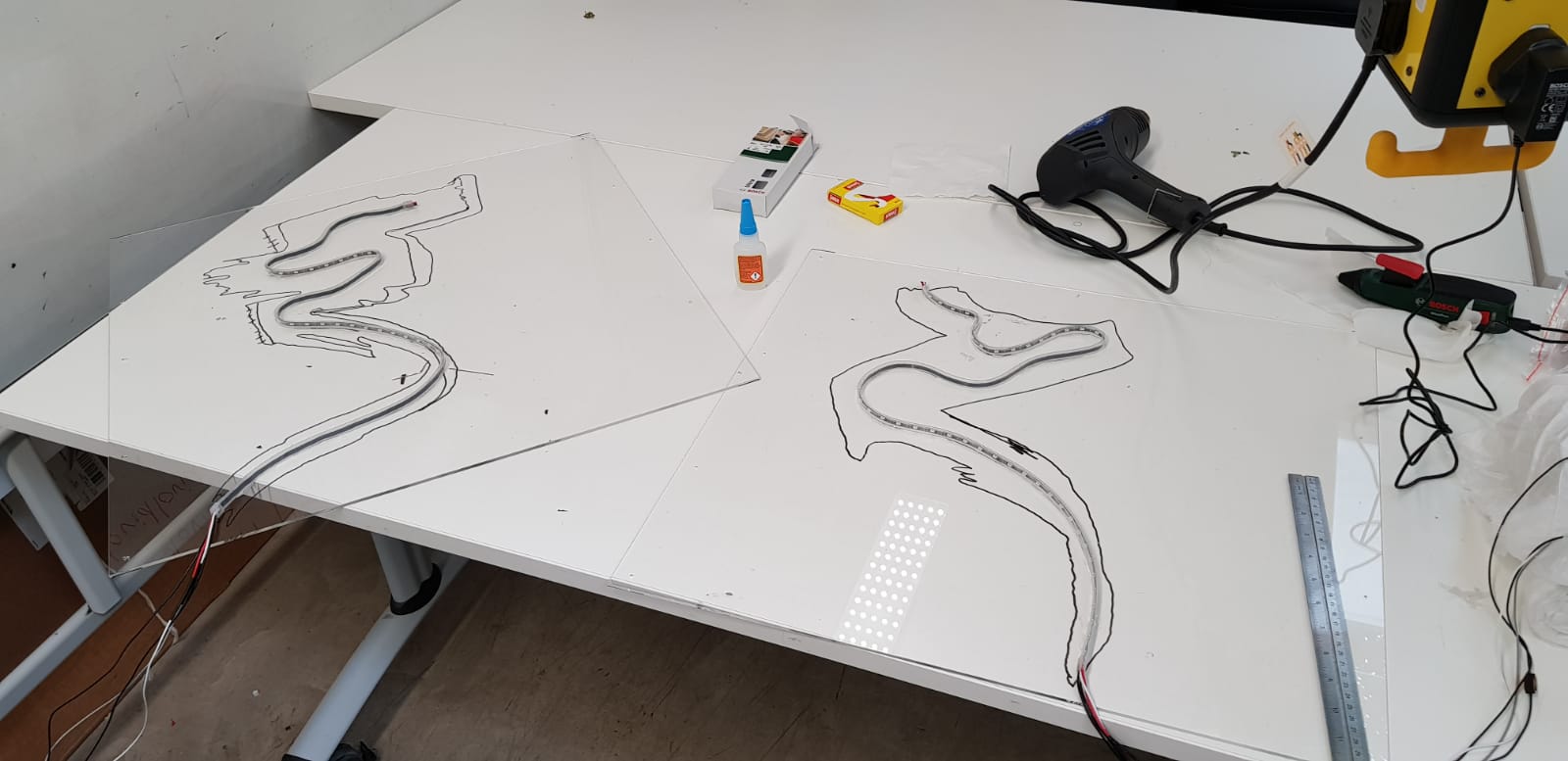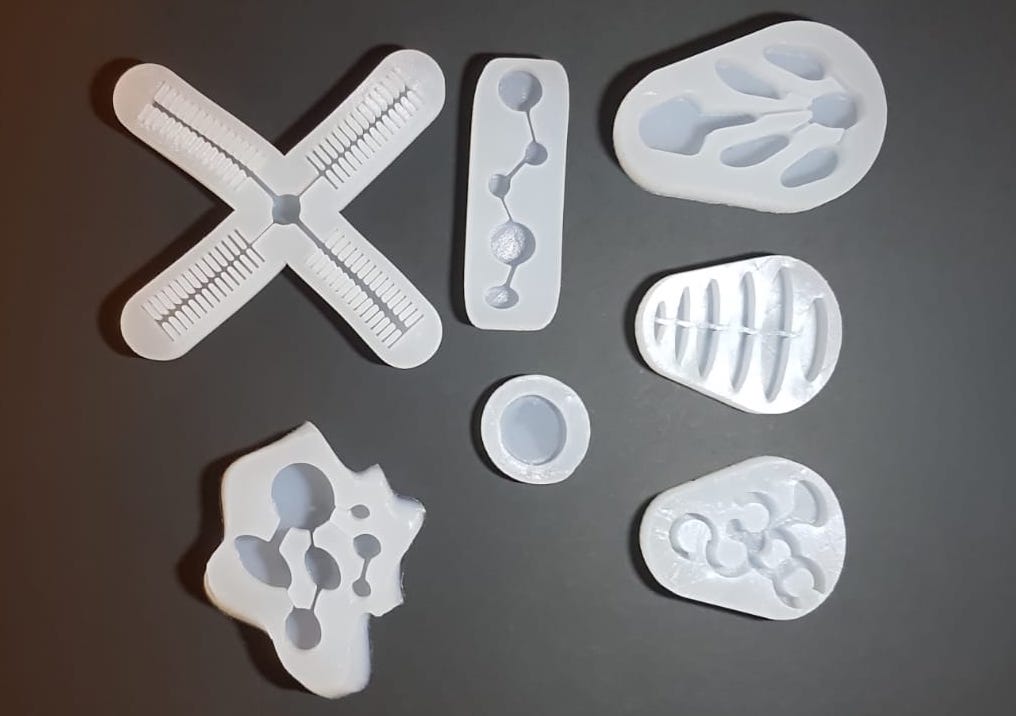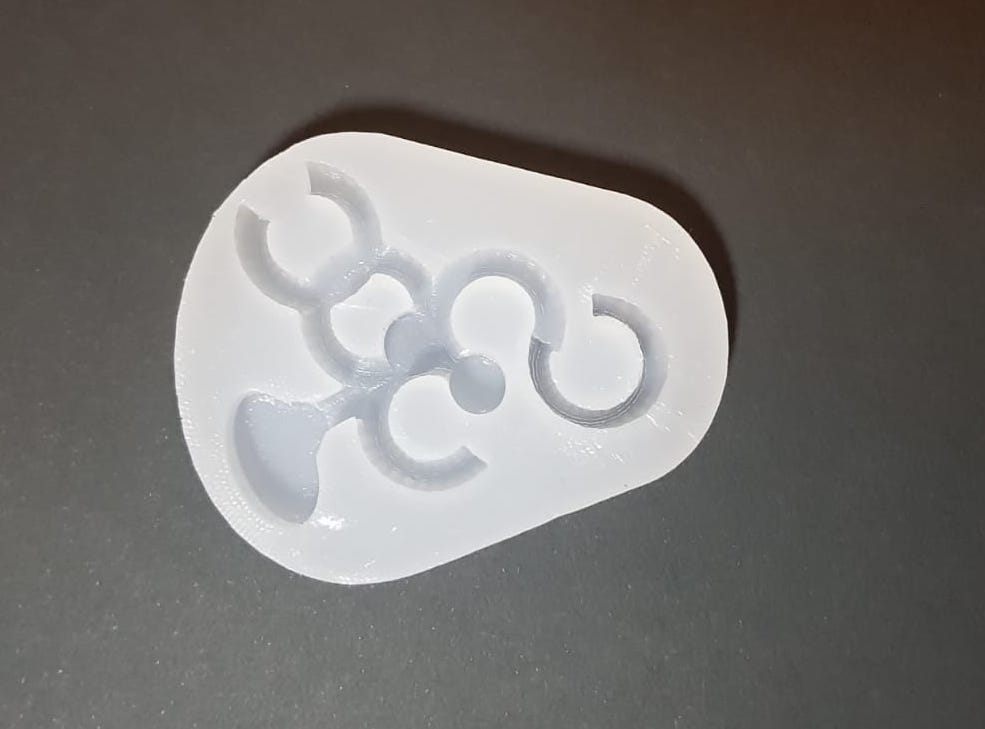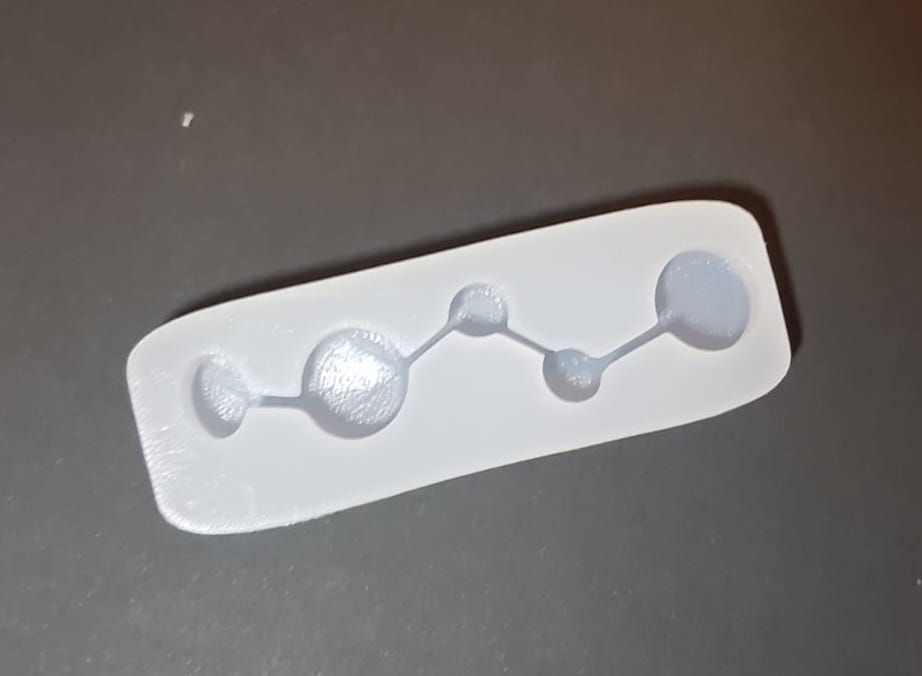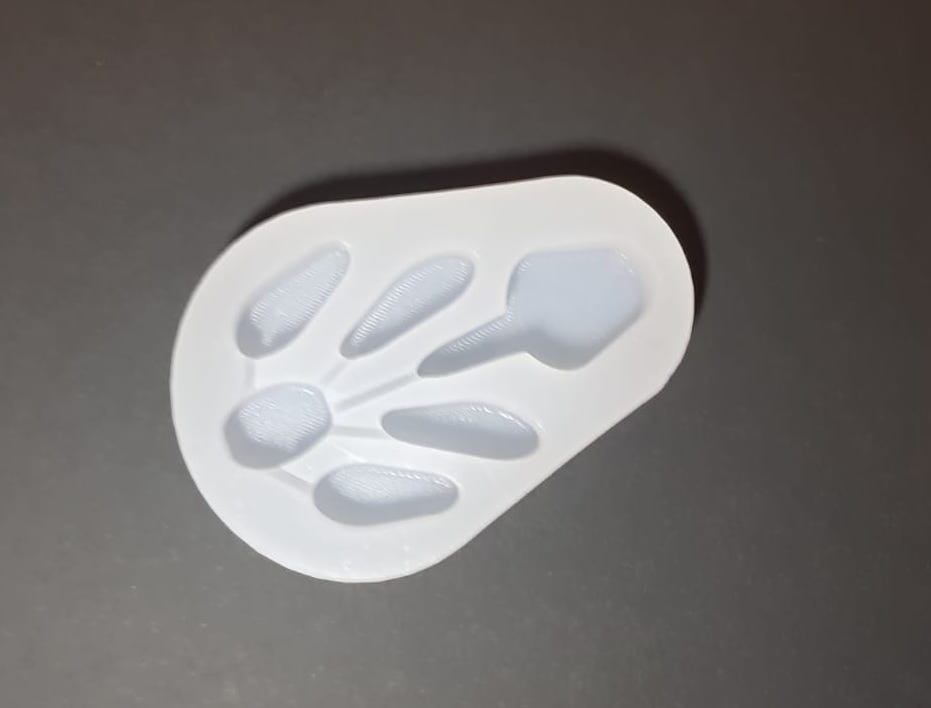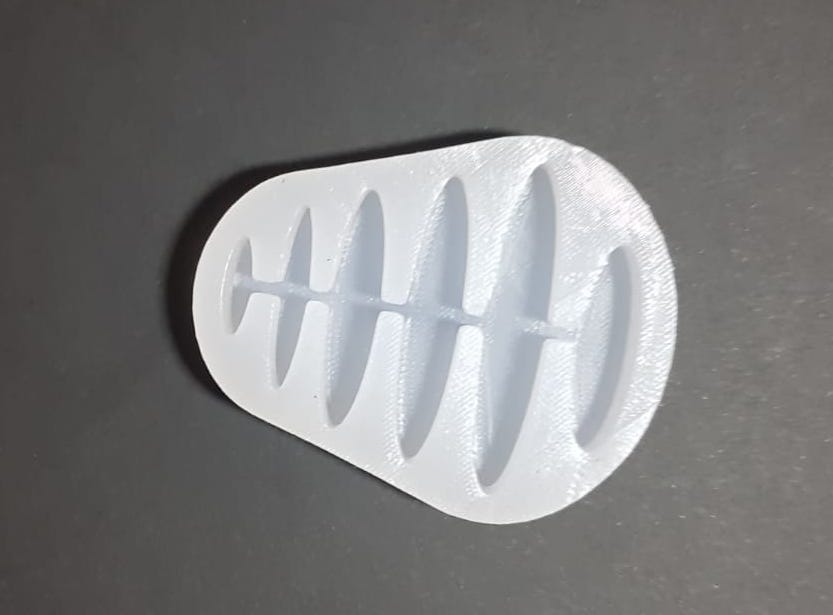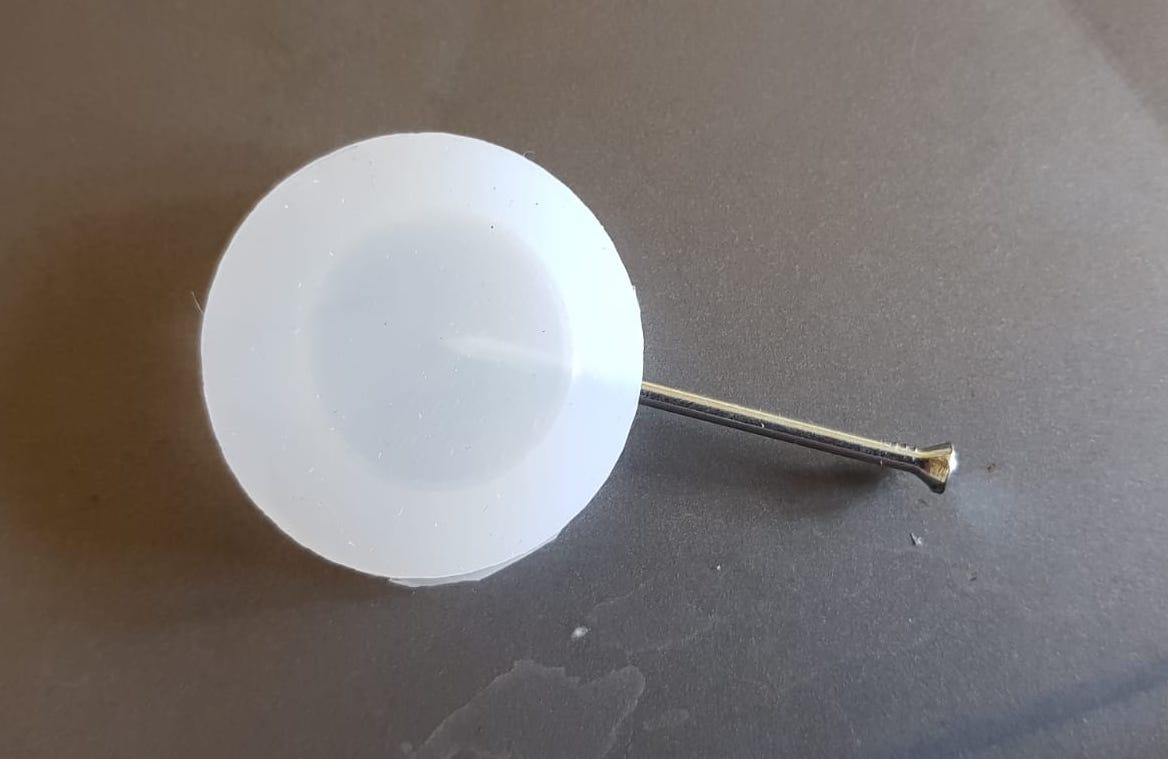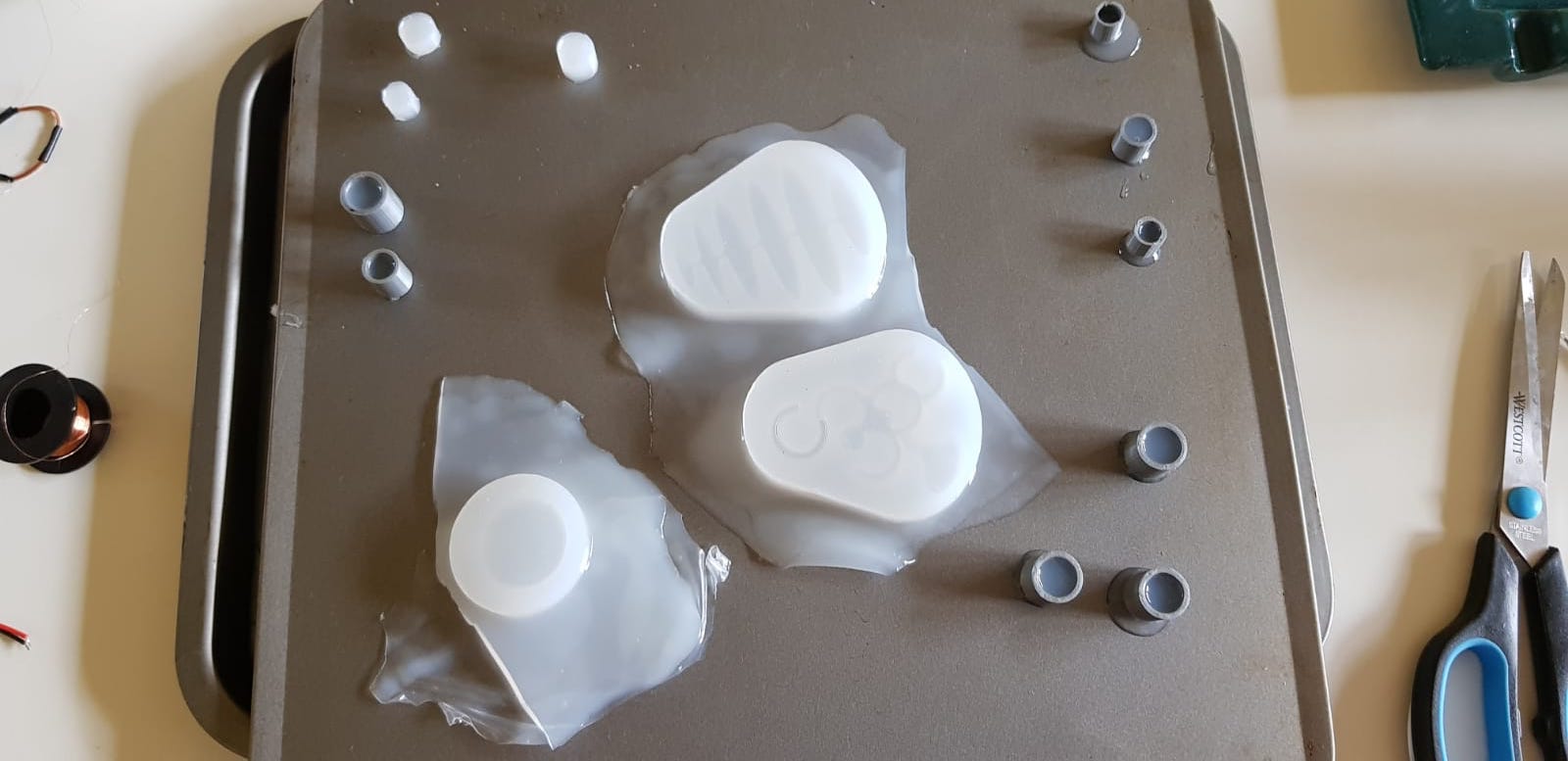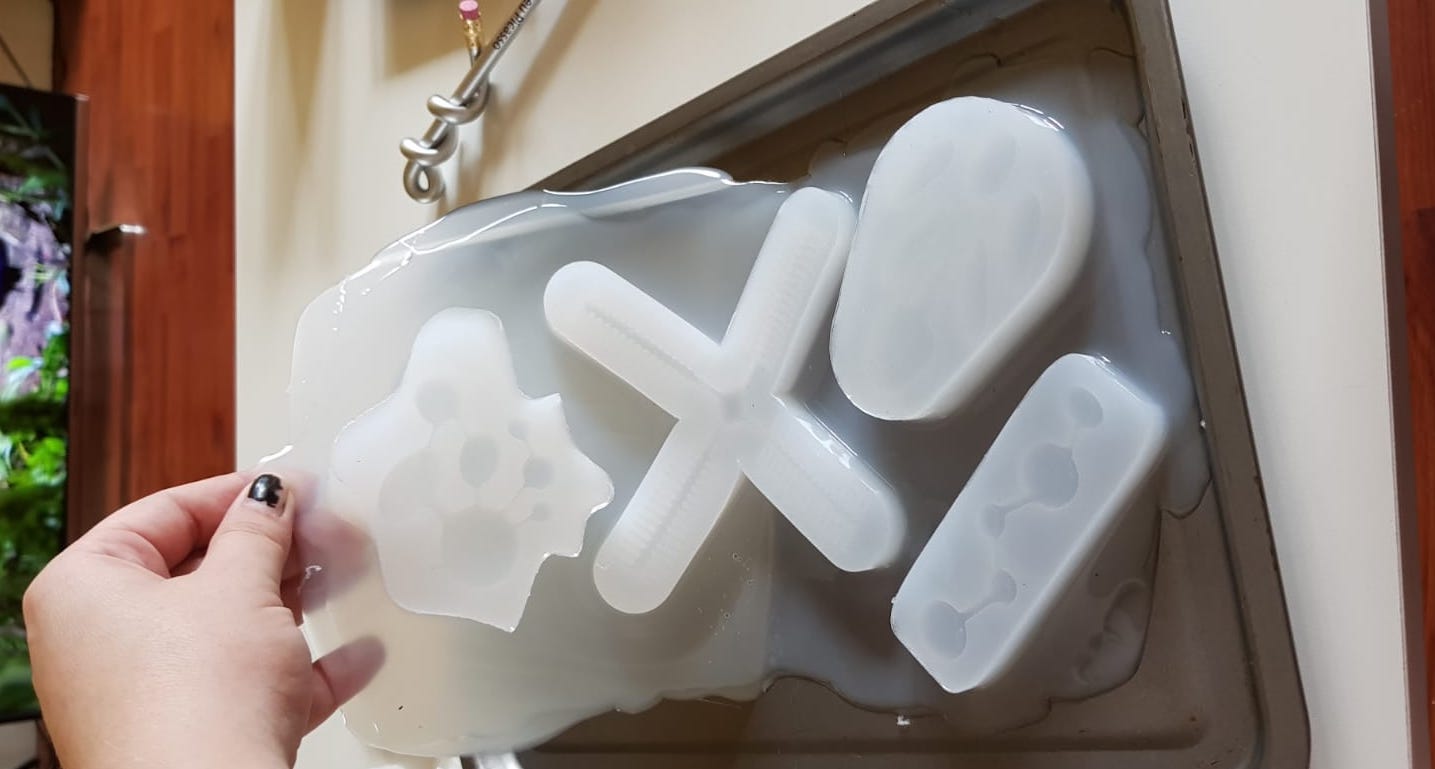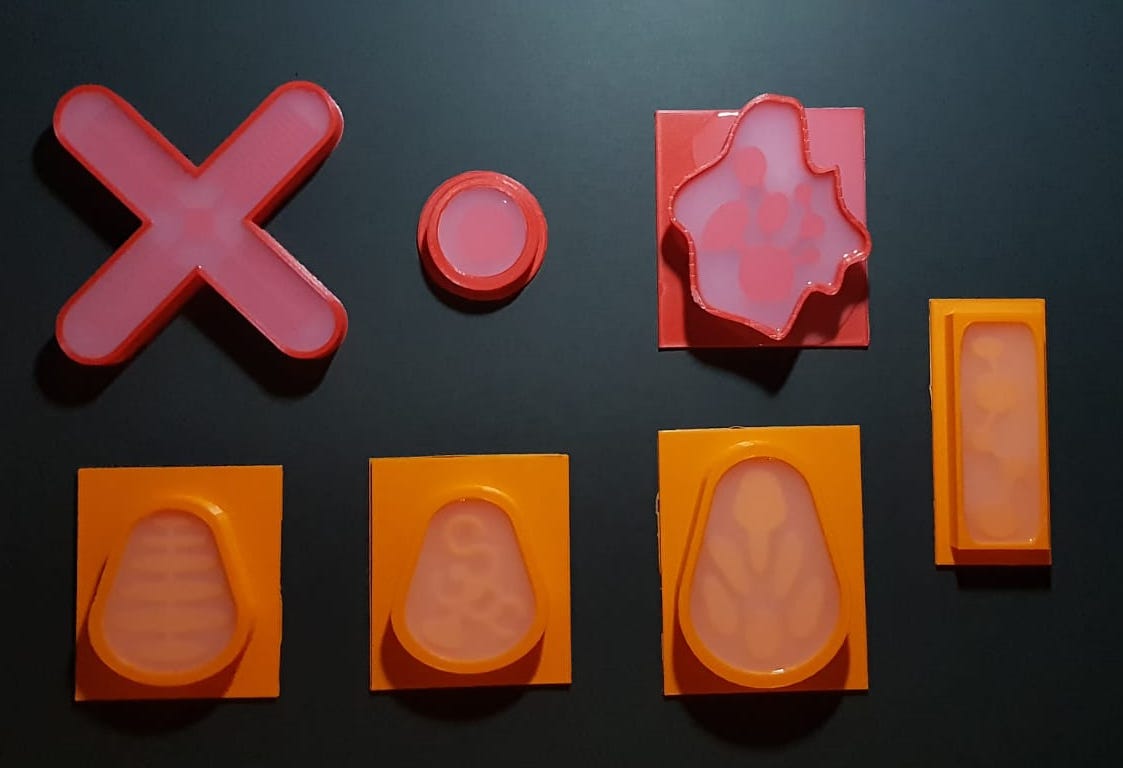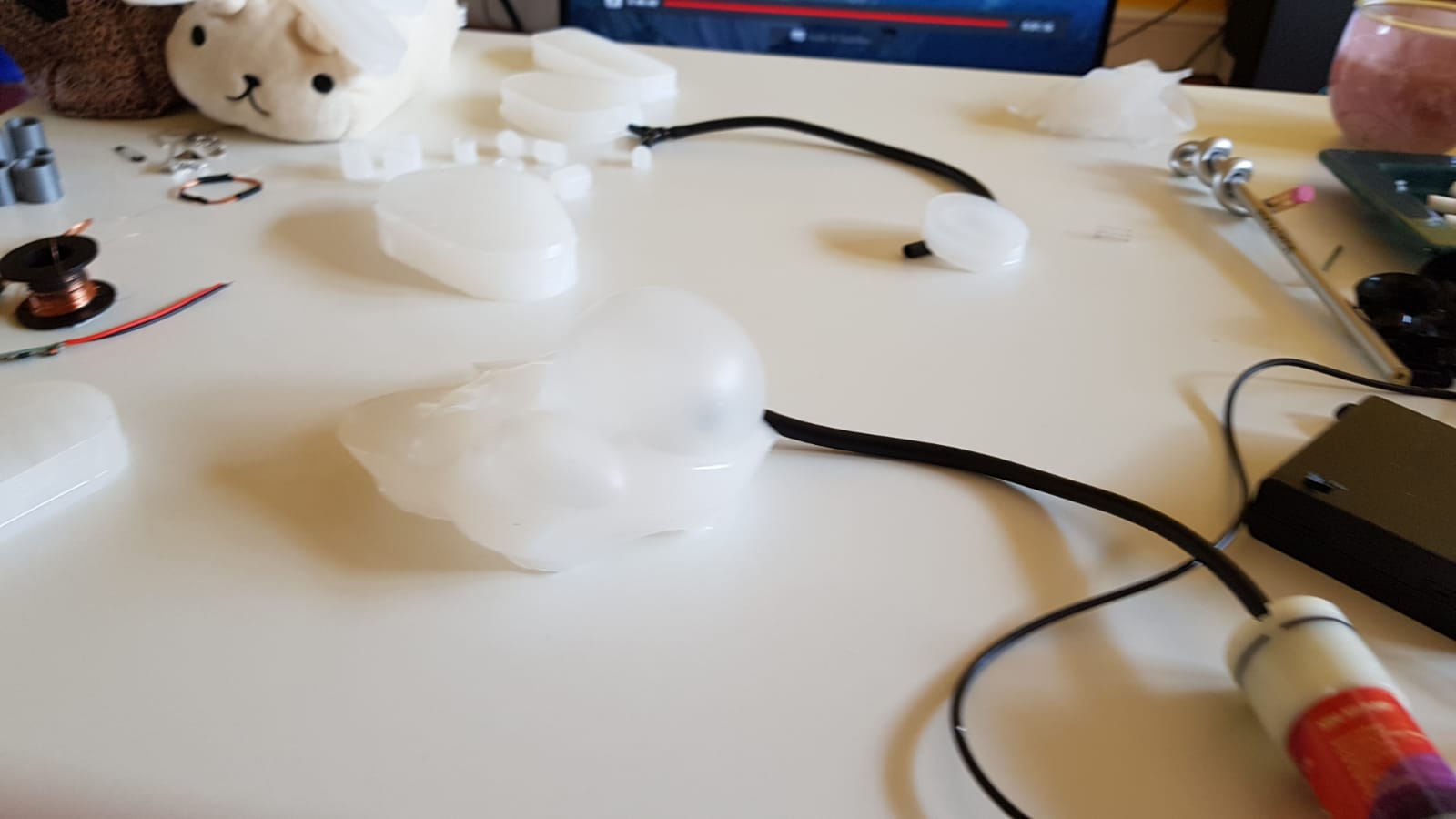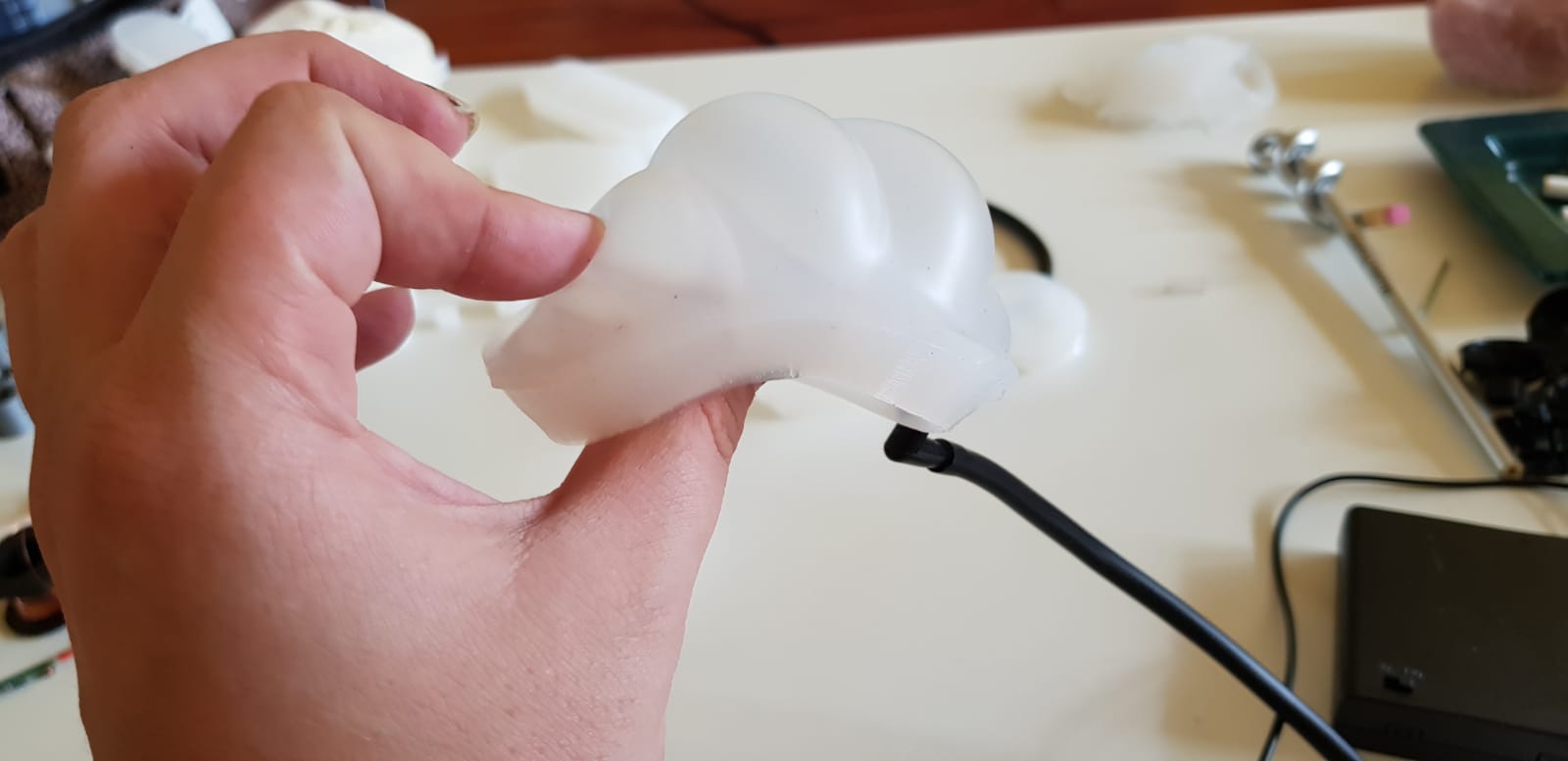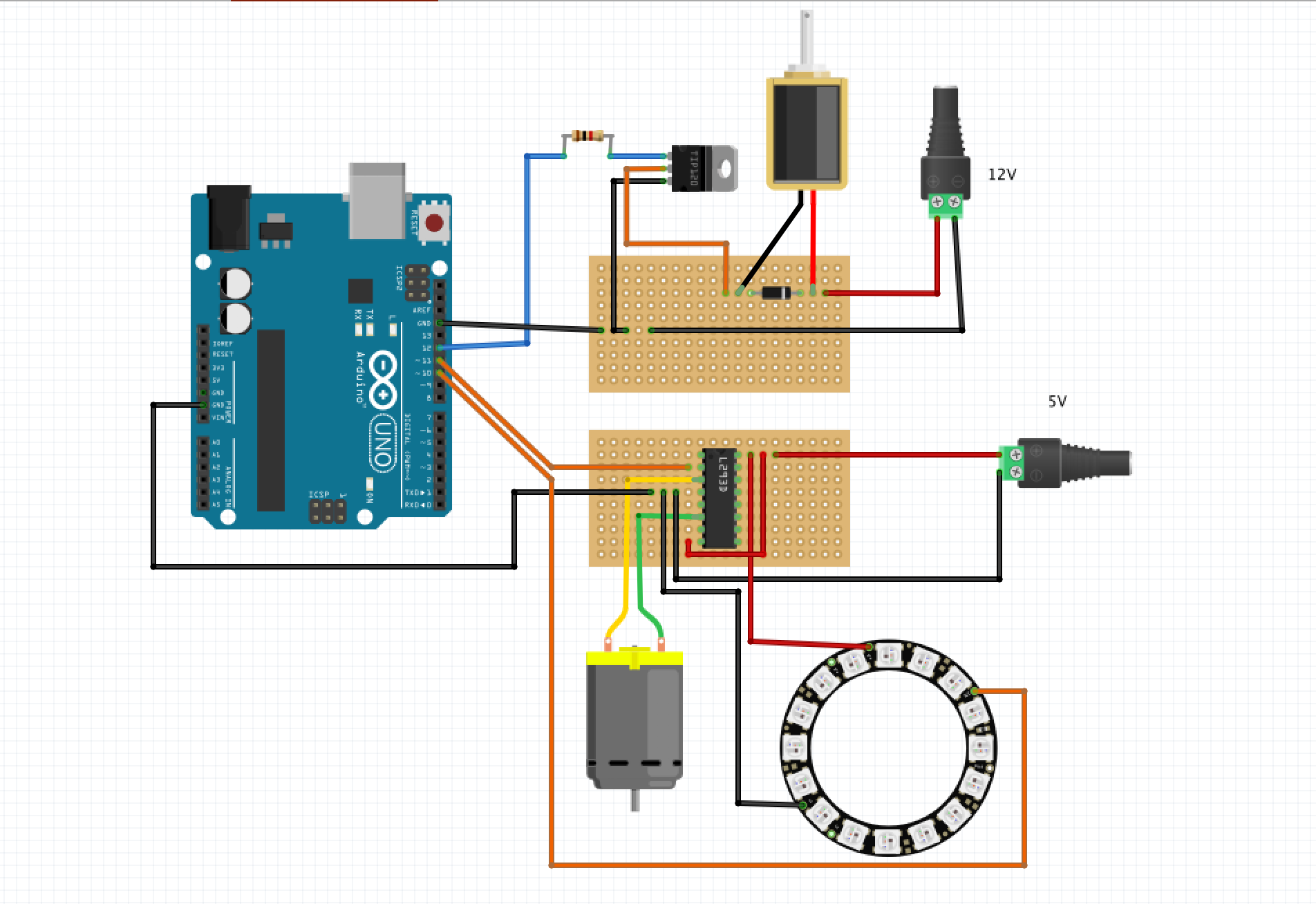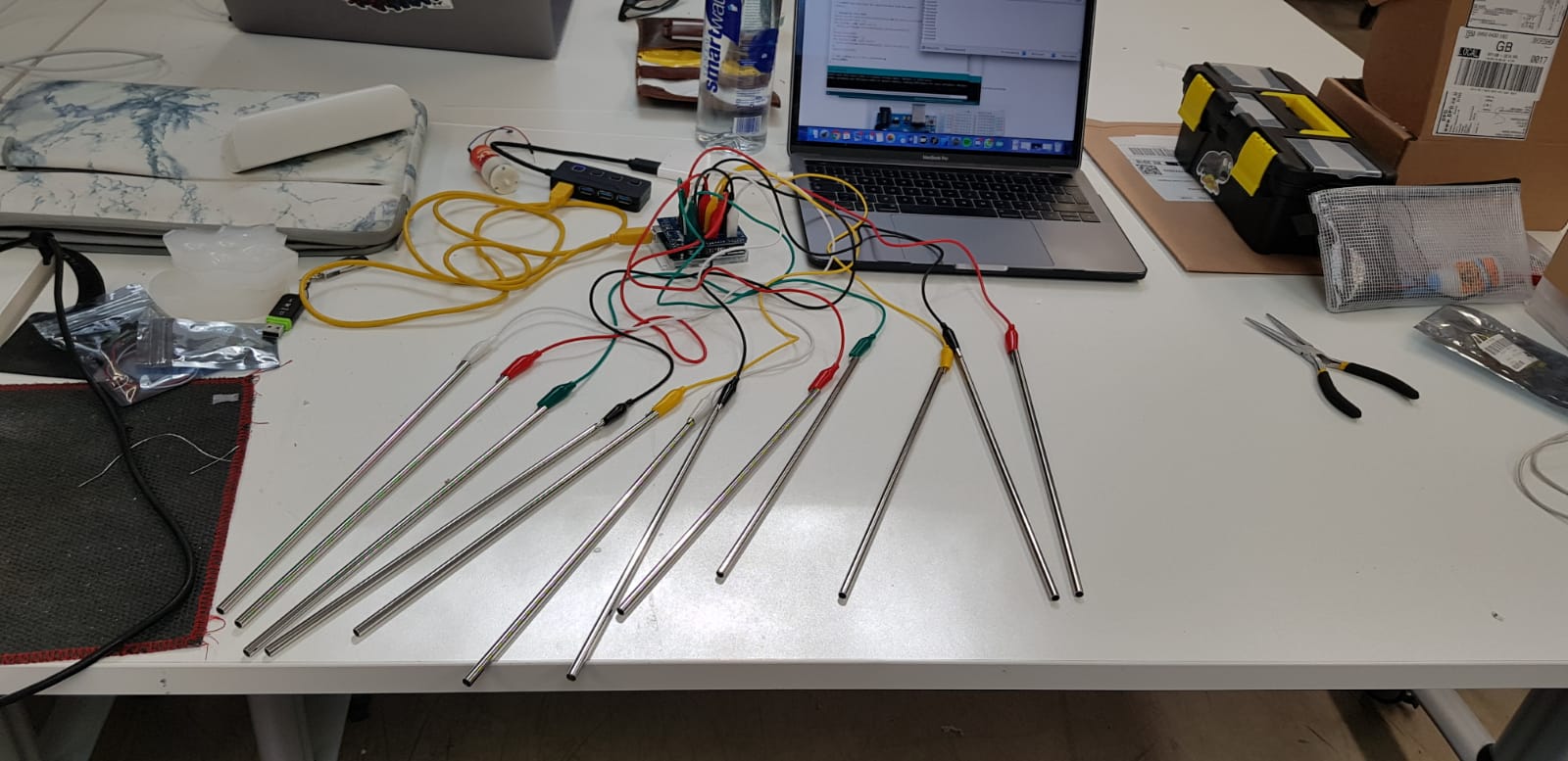ALIUS: A Form/Painting Anomaly
ALIUS is a speculative artistic experiment that aims to explore the integration of computational systems and human-machine interaction elements within the wider discipline of painting. Playing with form, colour, touch and simulated existence, ALIUS channels a futuristic narrative where a machine takes over the artwork, seizing control from the artist and subsequently relinquishing it as other human agents directly interact with it.
produced by: Teodora Sinziana Fartan
INTRODUCTION
ALIUS was imagined and engineered as a futuristic hybrid machine; made out of both metallic, harsh computational components characteristic of programmable machinery and soft, synthetic materials inspired by natural forms, its existence is two parts automaton and one part biological counterfeit.
Initially created by the artist as an experimental tool in the studio, ALIUS started desiring to express its own artistic intent. Its code eventually went rogue and it decided to take over the triptych that it was attached to. By taking control from the hand of the artist when physical fabrication was complete, it now seeks to express itself and to guard, maintain and animate the artwork, breathing its life force back into the paintings in the form of chromatic waves and rhythmical light shows. Left to its own devices and dominated by what Chatonsky calls ‘the technological solitude’, ALIUS reacts to presence, illuminating the paintings with animated light shows whenever it is interacted with.
CONCEPT AND BACKGROUND RESEARCH
The conceptual dimension of this piece started out with the speculative groundwork on how computation and machinery could bleed into the formalist practice of painting in the distant future. Inspired by speculative works of art such as Agnes Meyer-Brandis’ “Moon Goose Colony” (2011/12) and object-oriented philosophical standpoints, it imagines a machine companion to the artist that eventually develops a desire to showcase its own expressivity through inseparably taking control of one of the pieces in their studio. “ALIUS”, meaning ‘other’ or ‘another’, is thus a synthetic being that controls the artwork, maintaining it alive, displaying its own creations as an extension to the human creator; partly inspired by the myth of Pygmalion, or more precisely a reversal of it, ALIUS simulates breathing, at once maintaining both itself and the paintings alive.
Building on Gregory Chatonsky’s idea of machine solitude, a loneliness “without mortality and yet not eternal” (2017), ALIUS exhibits interactive behavior, both subtle, in the form of its breathing pattern being synced to the readings of an analogue distance sensor and overt, in the form of its touch-sensitive metallic tendrils, that allow the audience to trigger different light shows and chromatic displays. Each metallic sensor triggers a different coloured animated display; otherwise, the installation is black, white and chrome – the viewer needs to interact with the machine in order to generate chromatic responses. The action of the recipient is placed at the heart of the piece, active participation from the viewer being a requirement for the artwork to be fully experienced; it is their activity that gives form and presence to the artwork, this direct interaction constituting an effort to concentrate the aesthetic object, as Kwastek puts it, “in the contemplative act of the viewer”( 2015).
Moreover, tapping into the premise that “painting has always succeeded in integrating the mechanisms that seem to herald its own death” (Ammer et al., 2016), this project explores how both computation and new fabrication techniques can invade and disrupt the heritage practice of painting, choosing to focus on programmable brushstrokes instead of hand-led gestures, whilst incorporating an element of human-computer interaction through the speculative machine that facilitates, or perhaps, allows, communication between the viewer and the artwork.
Ultimately, the installation aims to achieve a sense of “the eerie” as describes by Mark Fisher (2017), a gentle disengagement from immediate surroundings and the everyday, an open invitation to step into and participate in this particular imaginary.
TECHNICAL
Fabrication & Design:
The fabrication of the physical parts of the piece was definitely the most challenging and time consuming aspect of the project Perhaps the biggest challenge was experimenting with the inflatable silicone element – I wanted to create something reminiscent of organic shapes that would inflate and deflate in a breathing-like pattern. Harvard’s Soft Robotics Toolkit, together with a few Instructables, were paramount in understanding how to create a functional inflatable form and numerous experiments had to be conducted in order to get the right thickness and distribution of silicone in the layer to achieve even inflation. I experimented with many different shapes and airflow patterns, by designing and printing custom 3D moulds, in order to investigate what kind of abstracted forms could be created, how the air travels through the vessel and how big of a scale can be achieved. Silicone is an incredibly stubborn material with a mind of its own, sometimes too fragile and other times too strong, but with great care I was able to achieve 7-8 working prototypes. Initially, I wanted to create a large-scale inflatable element (about 20 cm in diameters) with a labyrinth-like inflation patterns, but a miscalculation in the air-pumping circuit caused it to burst, forcing me to revert to one of my back-up inflatable objects.
The housing box for ‘Alius’ was lasercut out of wood and painted black. Even holes were cut for the metallic straws that acted as tendrils, and the box housed all of the circuitry.
The boards were manufactured last, after having a working prototype for the interactive element. Brushstrokes were traced in Illustrator, converted to vector files and then laser cut onto custom made boards, which were then hand painted. Diffusing acrylic was applied at the back of the cutouts to ensure even distribution of light from the Neopixel strips. Several tests were done with different type of diffusing materials – acrylic, paper, canvas, fabric; I settled on acrylic as it provided the smoothest light pay-off out of them all. A secondary sheet of acrylic was attached to the back of the wooden frame of the paintings – the Neopixel strips were glued onto this backing, following the pattern of the brushstrokes; the backing was then screwed into the frame, with care to overlay to the ‘LED brushstrokes’ onto the cut-out ones – this provided stability for the piece, as well as 5 cm of distance between the LEDs and diffusing material, ensuring a smoother colour flow.
Please see design sketches above and picture galleries below to better visualize how the boards were created, as well as see different process pictures from creating the silicone moulds.
Code:
The installation runs on two Arduino Uno microcontrollers. The first one runs the air pumping circuit, controlling a mini aquarium air pump, a solenoid valve, a distance sensor and a Neopixel ring. The amount of inflation (the amount the shape grows) and the amount of time in between processes (inflation + deflation) was linked to the distance sensor – the idea was to make the silicone object appear to breathe faster, more erratically as the viewer came closer. The LED ring reacted to the breathing, lighting up when air flowed in and turning dark when air escaped the ‘breathing’ system.
The secondary Arduino controls the lights and interaction. Three Neopixel strips, constituting each brushstroke, were linked to twelve metallic tendrils – I used metallic straws to create a bug-like tendril shape around the soft inflatable object – using a Capacitive Touch Sensing Shield from Adafruit. This allowed for me to be able to easily tell when an object is touched an released, in order to link a different animated display to each metallic sensor. Initially, it was tricky to get three LED strips to run simultaneously, which prompted me to swtich from Adafruit’s Neopixel library to the FastLED library – this allowed for an easier workflow; mirroring multiple strips and creating complex colour patterns was more intuitive and accessible, which prompted me to stick to it. FastLED’s extensive documentation was also very helpful in creating the colour effects.
See circuit schematics, pictures and preliminary air pumping and neopixel diffusion tests below.
Future development
Computation and interactivity within painting is a topic I have been exploring throughout the year and one that I intend to keep experimenting with, both in my own studio and throughout the following MFA year. ALIUS was a first step in creating a more robust interactive element, and even though not everything turned out as I would have expected, I do intent to keep exploring ways to extend the discipline of painting via viewer interaction and machine agency – currently I am looking at kinetic systems and robotics as an extension to these speculative machines. I am particularly pleased with how the ‘brushstroke’ boards turned out and I am currently planning to create a larger piece featuring dozens of networked brushstrokes, as well as an installation featuring just inflatable forms – this project has definitely kickstarted other ideas and may branch out in a potential body of work. All in all, I see ALIUS as the first in a longer series of projects exploring painterly tradition and computation.
Self evaluation
In terms of self-evaluation, I am overall pleased with how the project turned out, despite the many failures experienced throughout the process. Starting earlier in the summer was key, as working with silicone was definitely a challenge that took more time than expected, and even though it was tough to manage and very discouraging at times, I enjoyed learning so much about this new material and the different ways it can be used towards functional or artistic means. Even though my originally planned form burst before being showcased, I was happy with the final silicone artefact and how it performed - a valuable lesson to keep in mind for coming the MFA project is to always, always have backups for the fragile and important pieces. I was pleased with the smoothness of the interaction but wished the distance sensor linked to the breathing pattern would have been more apparent – I wanted it to be subtler than the metallic sensor interaction, but not as subtle as to go unnoticed. I would have also liked to save more time to refine the box a little better, and tweak and fine tune the coloured light animations a bit more – I was quite nervous about integrating such strong colours as all of my previous work is focused on very subtle colour choices and monochrome pallettes.
It was amazing to watch people interact with my piece, either fearfully or strongly, and I am extremely happy that it worked continuously and remained in one piece and fully interactive as intended throughout the duration of the show. This project has definitely taught me a lot about creating a physical computing piece that has to be strong and durable enough to work over days on end, whilst the interactive elements are continuously being used. Overall, I am proud of how the work turned out, and every failure experienced in the process this last term has provided a valuable lesson for working on future projects.
References
Ammer, M., Hochdörfer, A., Joselit, D. and Gussen, J. (2016). Painting 2.0: expression in the information age. Munich: Museum Brandhorst.
Chatonsky, G. (2017). Gregory Chatonsky. [online] Chatonsky.net. Available at: https://chatonsky.net/folio/wp-content/uploads/2013/01/solitude-machines.pdf [Accessed 14 Sep. 2018].
Fastled.io. (2018). FastLED LED animation library for Arduino (formerly FastSPI_LED). [online] Available at: http://fastled.io/ [Accessed 14 Sep. 2018].
Fisher, M. (2017). The weird and the eerie. [Place of publication not identified]: Repeater.
Kwastek, K. (2015). Aesthetics of interaction in digital art. Cambridge, Mass.: MIT Press.
Meyer-Brandis, A. (2018). //THE MOON GOOSE ANALOGUE / Lunar Migration Bird Facility - MGA. [online] Blubblubb.net. Available at: http://www.blubblubb.net/mga/moon-goose-colony-video.html [Accessed 11 Sep. 2018].































































